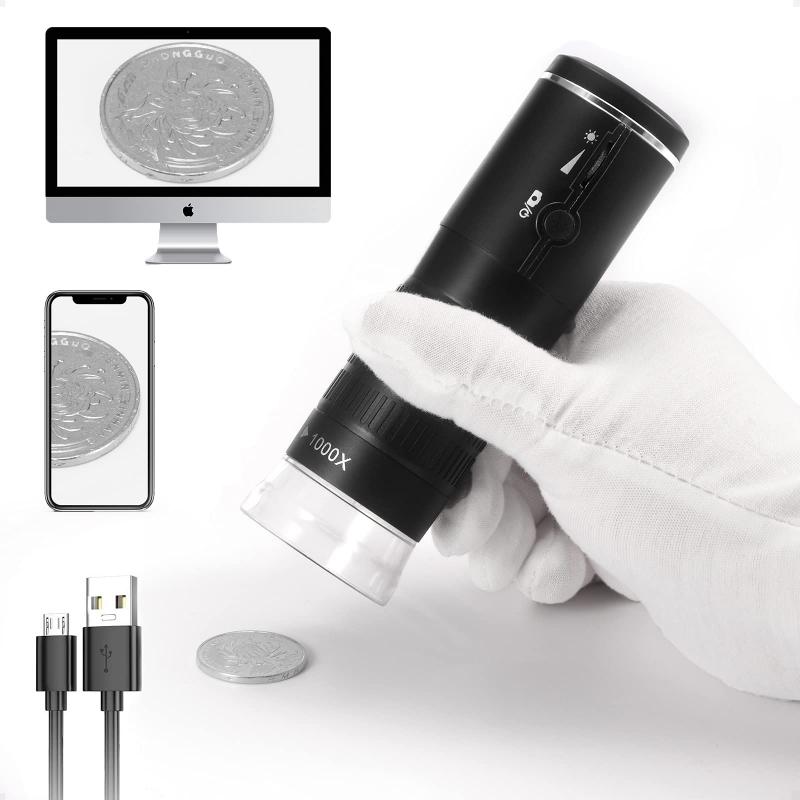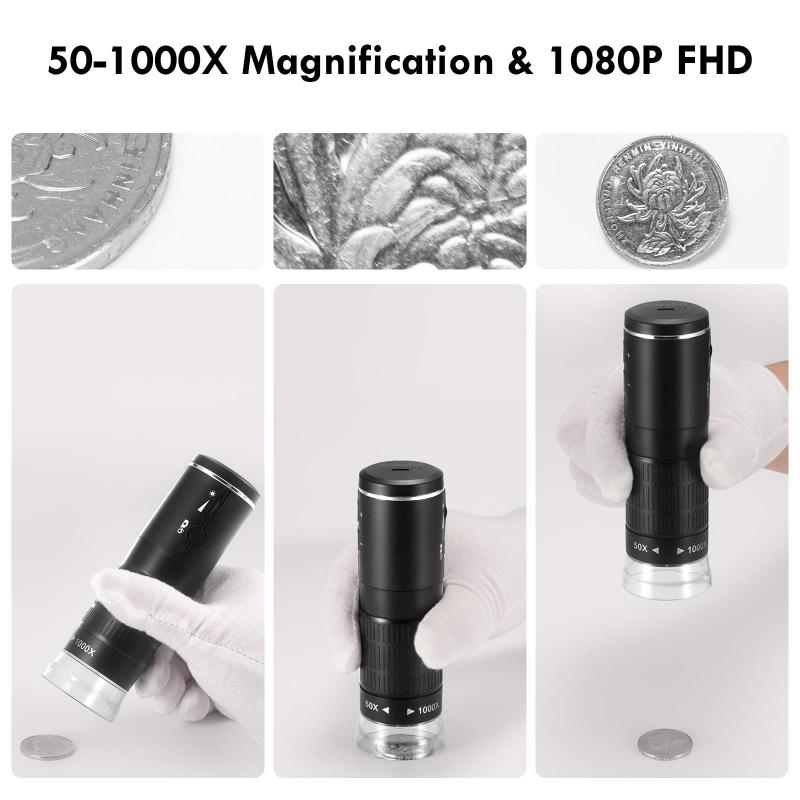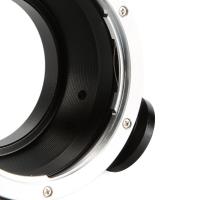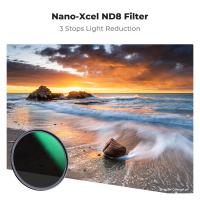Which Type Of Microscope Has The Best Resolution ?
The electron microscope has the best resolution among all types of microscopes.
1、 Electron Microscope: Highest resolution for observing ultrafine details.
The electron microscope is widely regarded as having the best resolution among all types of microscopes. It is capable of observing ultrafine details that are not visible with other types of microscopes. The resolution of a microscope refers to its ability to distinguish between two closely spaced objects as separate entities. In this regard, the electron microscope surpasses all other types of microscopes.
The electron microscope uses a beam of electrons instead of light to create an image. This allows for much higher magnification and resolution compared to traditional light microscopes. The wavelength of electrons is much shorter than that of visible light, enabling the electron microscope to achieve a resolution that is up to 100 times better than a light microscope.
There are two main types of electron microscopes: transmission electron microscopes (TEM) and scanning electron microscopes (SEM). TEMs are used to observe the internal structure of specimens, while SEMs provide detailed surface images. Both types of electron microscopes offer exceptional resolution and are widely used in various scientific fields.
In recent years, advancements in electron microscopy technology have further improved the resolution capabilities of electron microscopes. For example, aberration correction techniques have been developed to minimize distortions in the electron beam, resulting in even higher resolution images. Additionally, the development of cryo-electron microscopy has allowed for the observation of biological samples in their native state, providing unprecedented insights into cellular structures.
In conclusion, the electron microscope, with its ability to achieve the highest resolution for observing ultrafine details, remains the gold standard in microscopy. Ongoing advancements in electron microscopy technology continue to push the boundaries of what can be observed at the microscopic level, opening up new avenues for scientific discovery.

2、 Scanning Probe Microscope: Achieves atomic-scale resolution by scanning a probe.
The type of microscope that has the best resolution is the Scanning Probe Microscope (SPM). This powerful instrument is capable of achieving atomic-scale resolution by scanning a probe over the surface of a sample. The SPM has revolutionized the field of nanotechnology and has become an essential tool for studying materials at the nanoscale.
The SPM works by using a tiny probe, typically a sharp tip, which is brought into close proximity with the sample. As the probe scans the surface, it interacts with the atoms or molecules on the sample, and this interaction is measured to create a high-resolution image. The SPM can provide detailed information about the topography, electrical conductivity, magnetic properties, and even chemical composition of a sample.
Compared to other types of microscopes, such as optical or electron microscopes, the SPM offers several advantages. Firstly, it can achieve much higher resolution. While optical microscopes are limited by the diffraction of light, and electron microscopes have limitations due to the wavelength of electrons, the SPM can overcome these limitations and provide atomic-scale resolution.
Furthermore, the SPM can operate in various environments, including vacuum, air, or even liquid, allowing for the study of samples in their natural conditions. This versatility makes the SPM suitable for a wide range of applications, from materials science and nanotechnology to biology and medicine.
In recent years, there have been advancements in SPM technology, leading to even higher resolution and improved capabilities. For example, non-contact SPM techniques, such as frequency modulation atomic force microscopy, have been developed, allowing for gentle imaging of delicate samples without causing damage.
In conclusion, the Scanning Probe Microscope is the type of microscope that has the best resolution. Its ability to achieve atomic-scale resolution and its versatility in various environments make it an indispensable tool for studying materials at the nanoscale. Ongoing advancements in SPM technology continue to push the boundaries of resolution and expand its applications in various scientific fields.

3、 Super-resolution Microscope: Overcomes diffraction limit to enhance resolution.
The type of microscope that has the best resolution is the super-resolution microscope. Super-resolution microscopy is a revolutionary technique that overcomes the diffraction limit of light, which has traditionally limited the resolution of optical microscopes to around 200-300 nanometers. This technique allows scientists to visualize and study biological structures and processes at a much higher level of detail than was previously possible.
Super-resolution microscopy has been a game-changer in the field of biology and has opened up new avenues for research. By using various methods such as stimulated emission depletion (STED) microscopy, structured illumination microscopy (SIM), and single-molecule localization microscopy (SMLM), super-resolution microscopes can achieve resolutions down to the nanometer scale.
One of the key advantages of super-resolution microscopy is its ability to visualize and study structures and processes that were previously too small to be resolved by conventional microscopes. This includes studying the organization and dynamics of proteins within cells, the structure of cellular organelles, and even the interactions between individual molecules.
In recent years, there have been significant advancements in super-resolution microscopy techniques. For example, scientists have developed new fluorescent probes and labeling techniques that allow for more precise and specific imaging of cellular structures. Additionally, computational algorithms have been developed to improve the accuracy and reliability of super-resolution imaging.
Overall, super-resolution microscopy has revolutionized the field of microscopy by providing researchers with the ability to visualize and study biological structures and processes at an unprecedented level of detail. It continues to be an active area of research, with ongoing advancements and improvements being made to further enhance its resolution and capabilities.

4、 Confocal Microscope: Provides improved resolution and optical sectioning capabilities.
Confocal Microscope: Provides improved resolution and optical sectioning capabilities.
The confocal microscope is widely regarded as one of the most advanced types of microscopes available today, offering improved resolution and optical sectioning capabilities. It has revolutionized the field of microscopy by allowing researchers to obtain high-resolution images of biological samples with exceptional clarity and detail.
One of the key features of a confocal microscope is its ability to eliminate out-of-focus light, resulting in improved resolution. Traditional microscopes capture all the light that passes through the sample, including the light that is scattered or emitted from areas above and below the focal plane. This scattered light reduces the clarity and resolution of the image. In contrast, a confocal microscope uses a pinhole aperture to only allow light from the focal plane to reach the detector, effectively eliminating the out-of-focus light. This technique, known as optical sectioning, enables researchers to capture sharp images with enhanced resolution.
Furthermore, confocal microscopes are equipped with laser scanning systems that allow for precise control over the excitation light. This enables researchers to selectively illuminate specific areas of the sample, resulting in improved contrast and reduced photobleaching. The ability to control the excitation light also allows for the acquisition of three-dimensional images, providing valuable insights into the structure and organization of biological samples.
In recent years, advancements in confocal microscopy have further improved its resolution capabilities. Super-resolution techniques, such as stimulated emission depletion (STED) microscopy and structured illumination microscopy (SIM), have been integrated into confocal microscopes, allowing researchers to achieve resolutions beyond the diffraction limit of light. These techniques utilize clever optical tricks and fluorescent probes to overcome the limitations of traditional microscopy and provide unprecedented levels of detail.
In conclusion, the confocal microscope is widely recognized as the type of microscope with the best resolution. Its ability to eliminate out-of-focus light, optical sectioning capabilities, and integration of super-resolution techniques make it an invaluable tool for researchers in various fields, including biology, medicine, and materials science. As technology continues to advance, it is likely that confocal microscopes will continue to push the boundaries of resolution and imaging capabilities, further enhancing our understanding of the microscopic world.






























There are no comments for this blog.